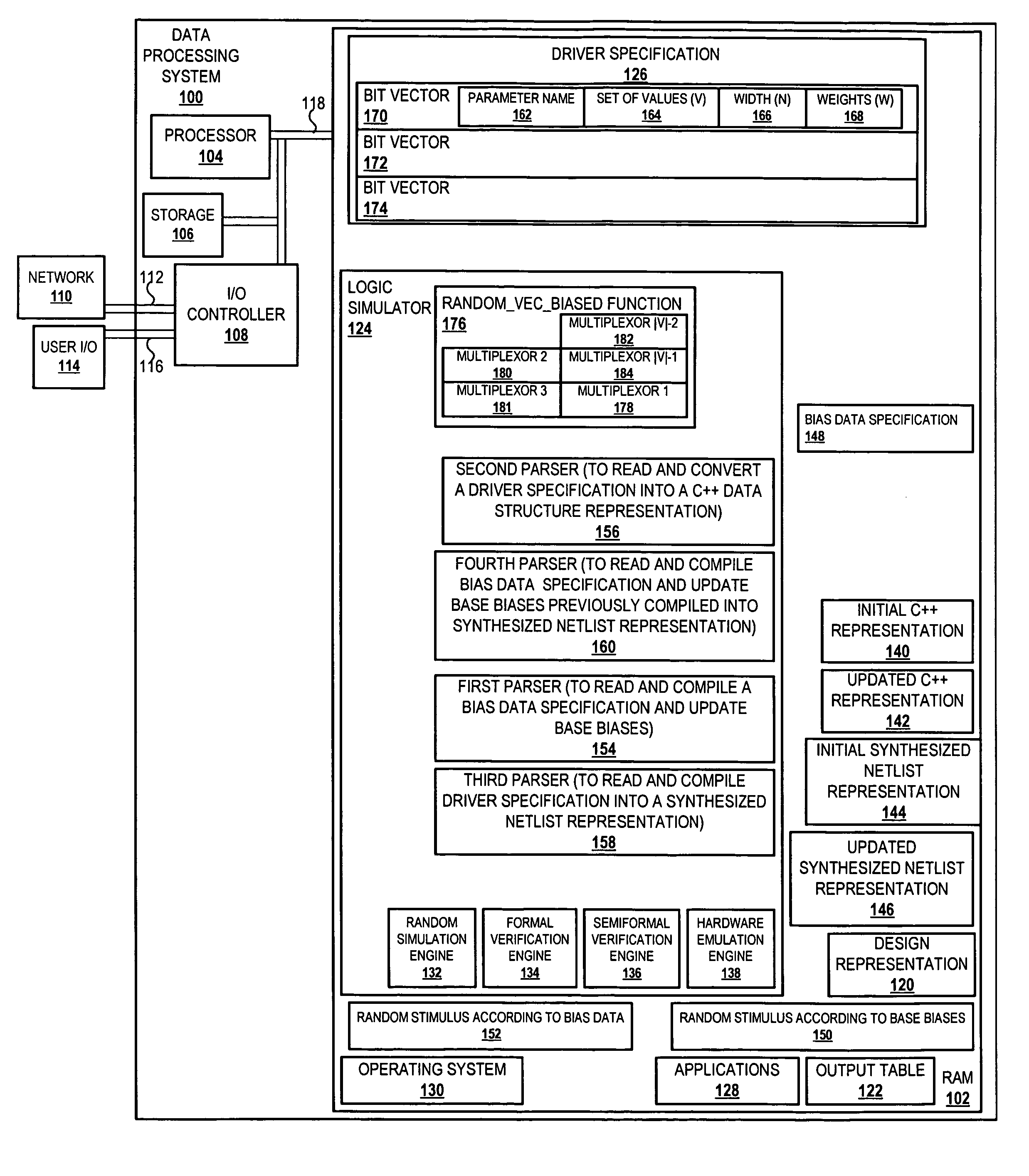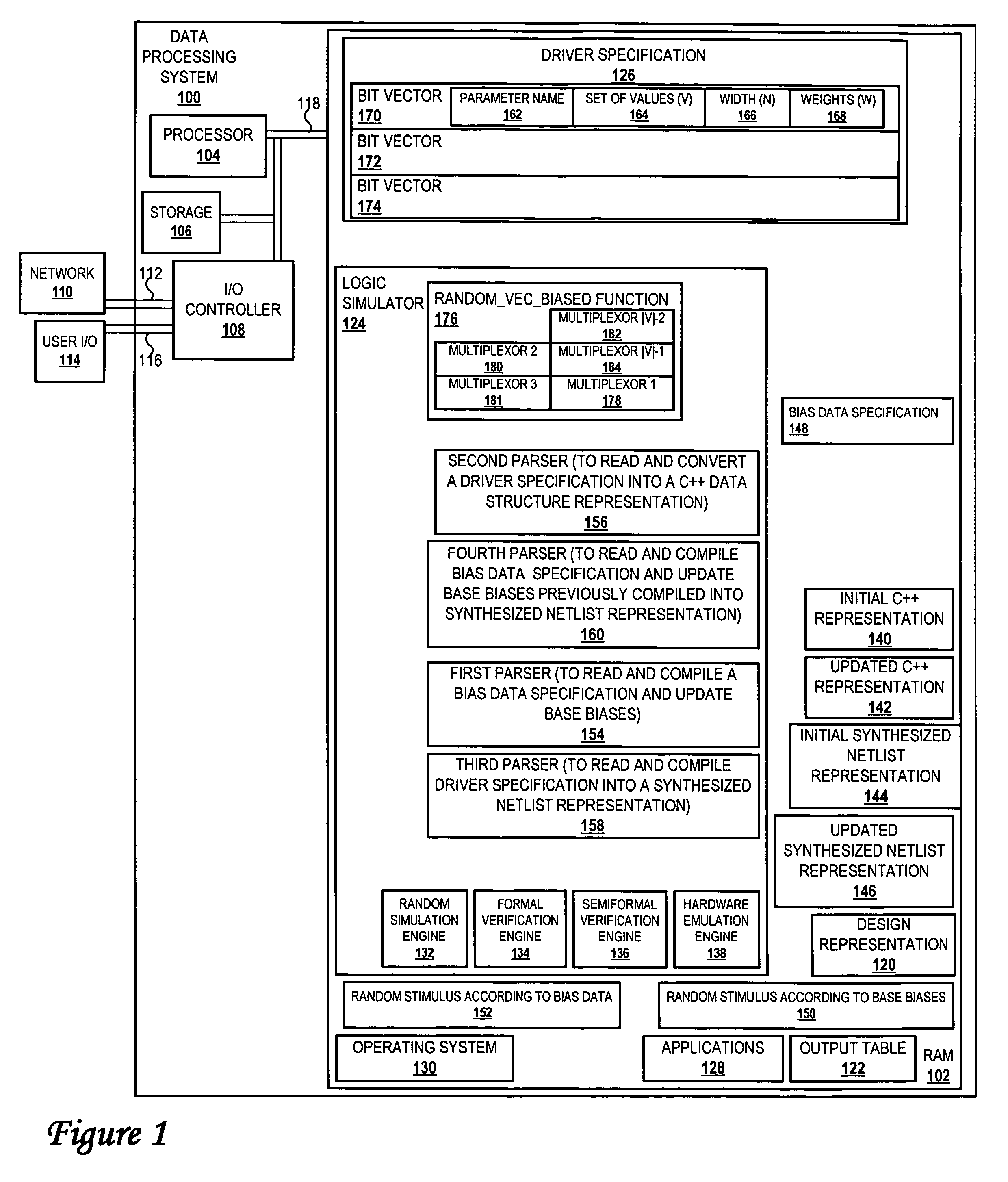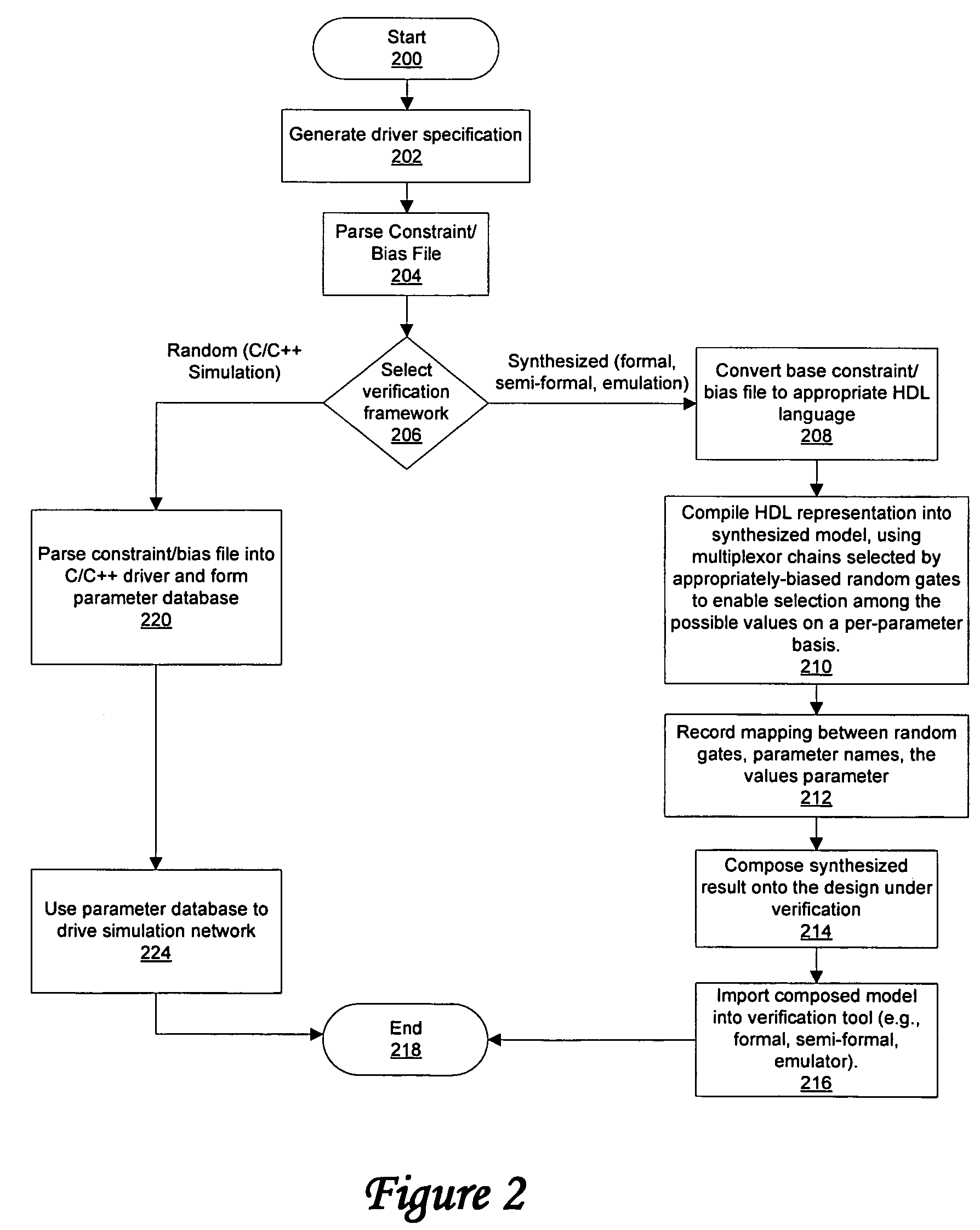Method for reconfiguration of random biases in a synthesized design without recompilation
a random bias and synthesized design technology, applied in the field of testing and verification, can solve the problems of hardware verification becoming one of the most important and time-consuming aspects of the design process, consumers of circuit products have lost tolerance for results polluted by design errors,
- Summary
- Abstract
- Description
- Claims
- Application Information
AI Technical Summary
Benefits of technology
Problems solved by technology
Method used
Image
Examples
Embodiment Construction
[0015]The present invention enables the same specification to be used for both drivers and bias data files across all platforms, decreasing overall verification resources. In particular, the present invention facilitates the synergistic reuse of a driver specification for reducing the resource commitments inherent in testing and verification of a digital design. The benefit of this approach is that it enables testing time and resource reductions far exceeding those possible in the prior art. The result of the present invention is drastic savings in computational resources for the verification process, enabling design flaws to be exposed and proofs to be completed that otherwise would be unfeasible.
[0016]With reference now to the figures, and in particular with reference to FIG. 1, a block diagram of a data processing system equipped with a computer program product for verification of digital designs through reconfiguration of random biases in a synthesized design without recompilati...
PUM
 Login to View More
Login to View More Abstract
Description
Claims
Application Information
 Login to View More
Login to View More - R&D
- Intellectual Property
- Life Sciences
- Materials
- Tech Scout
- Unparalleled Data Quality
- Higher Quality Content
- 60% Fewer Hallucinations
Browse by: Latest US Patents, China's latest patents, Technical Efficacy Thesaurus, Application Domain, Technology Topic, Popular Technical Reports.
© 2025 PatSnap. All rights reserved.Legal|Privacy policy|Modern Slavery Act Transparency Statement|Sitemap|About US| Contact US: help@patsnap.com



